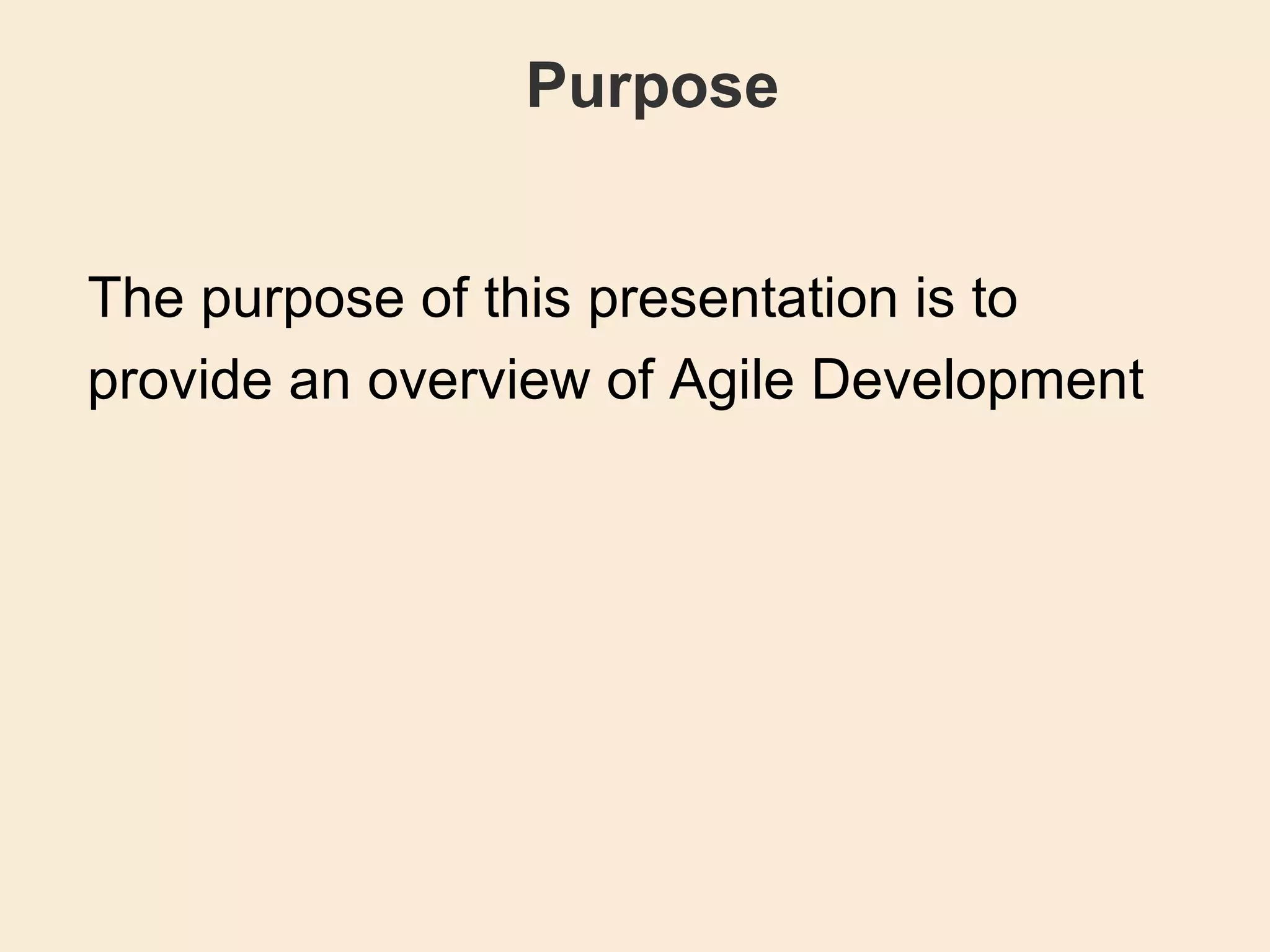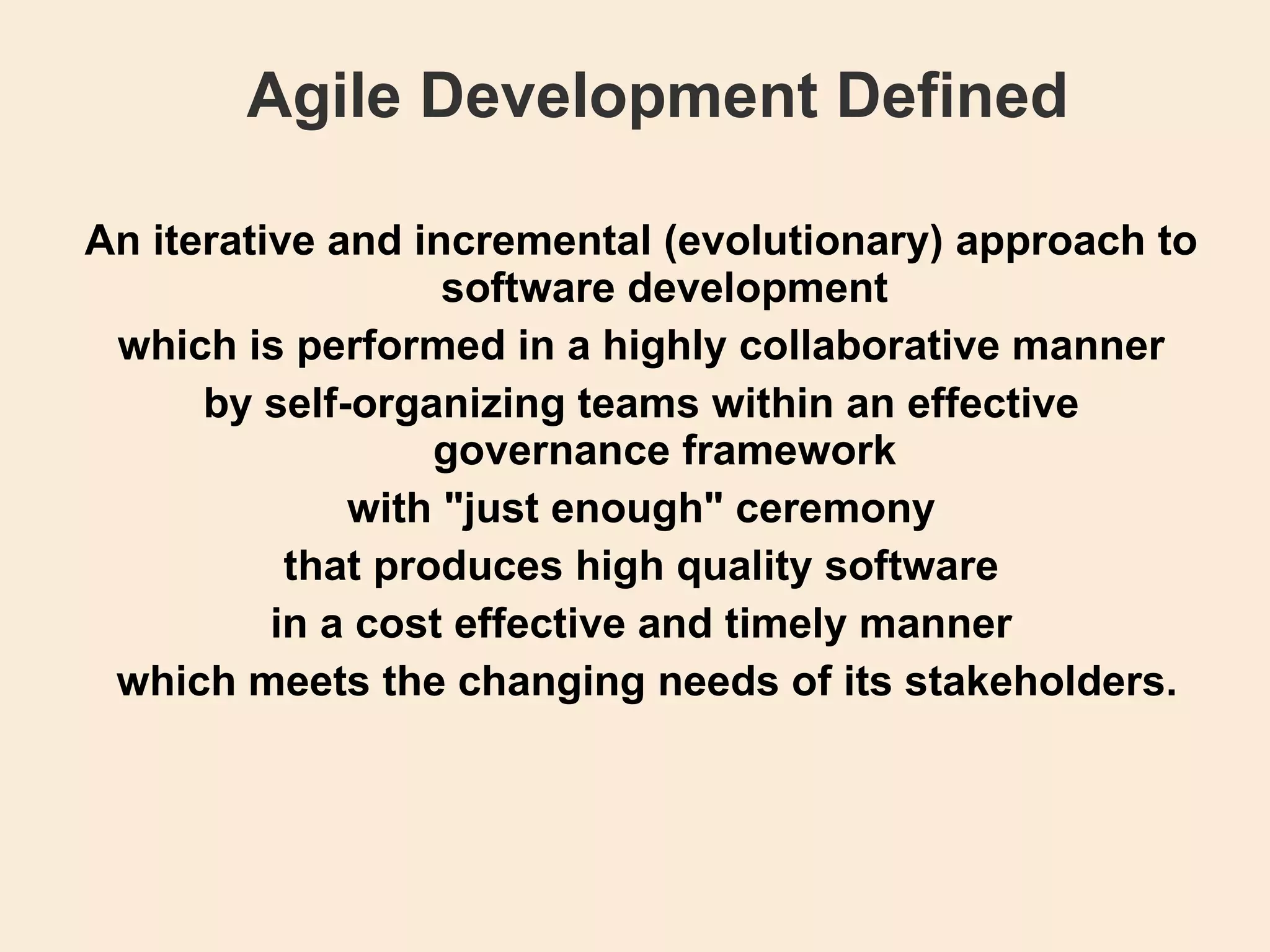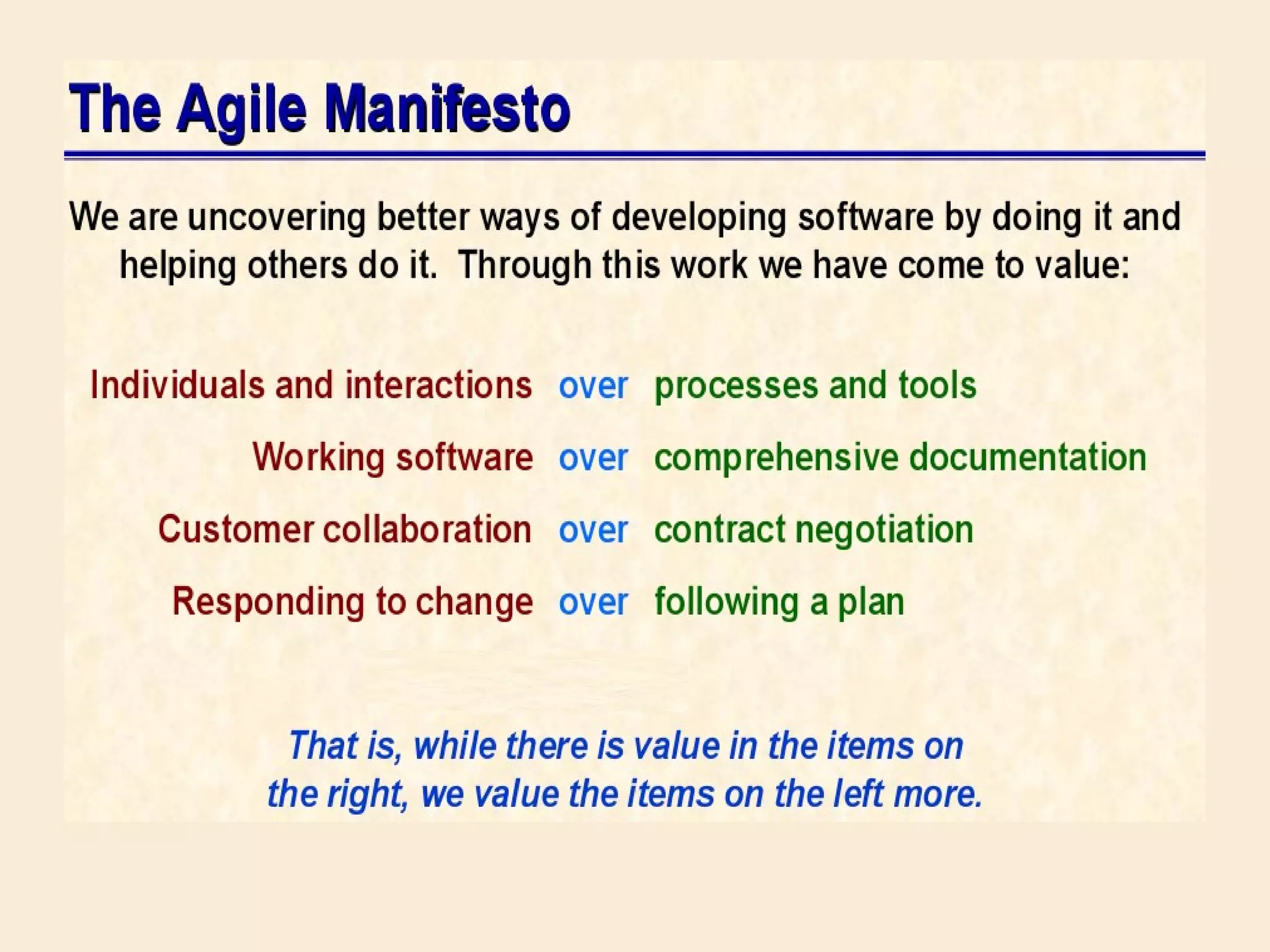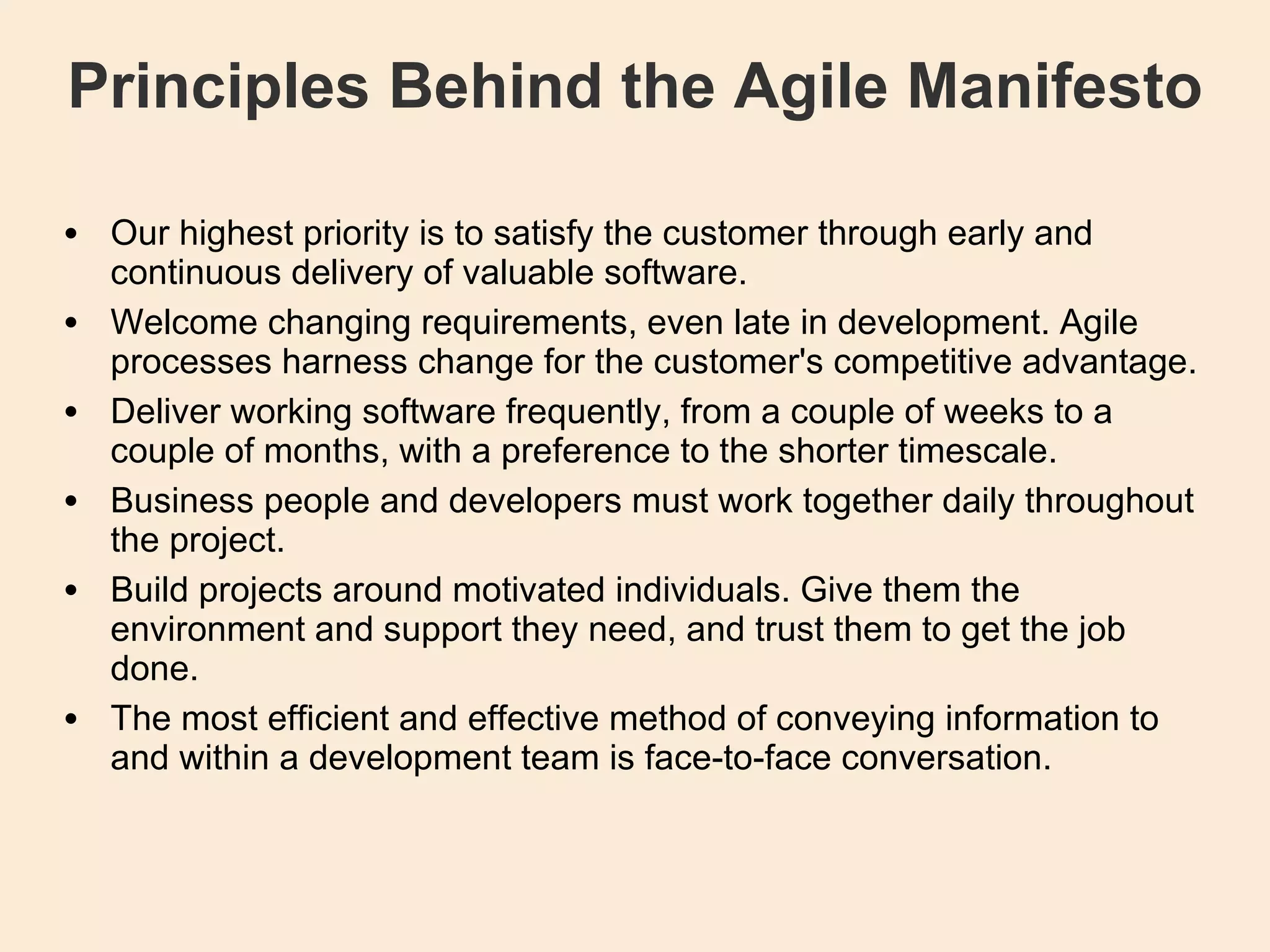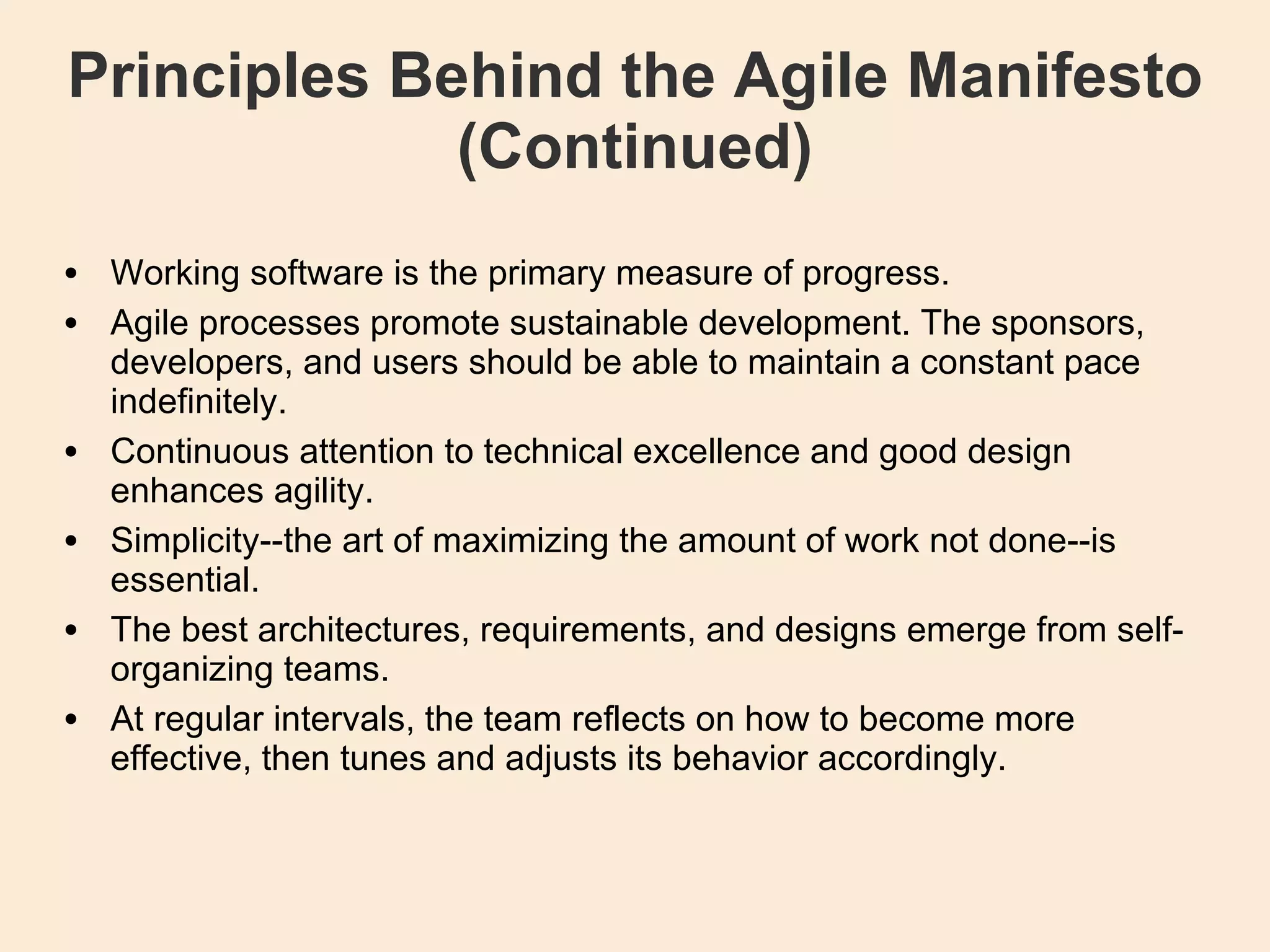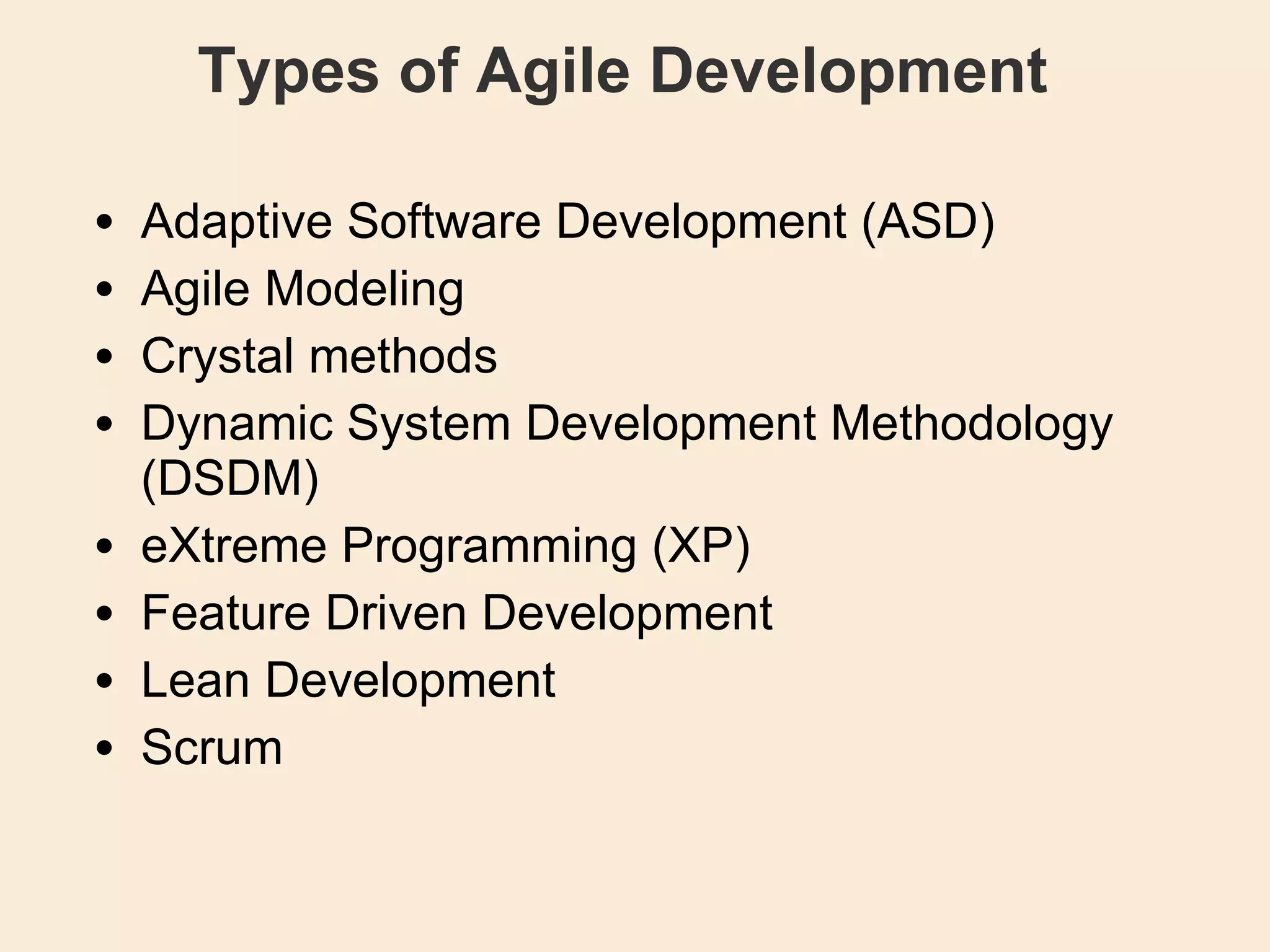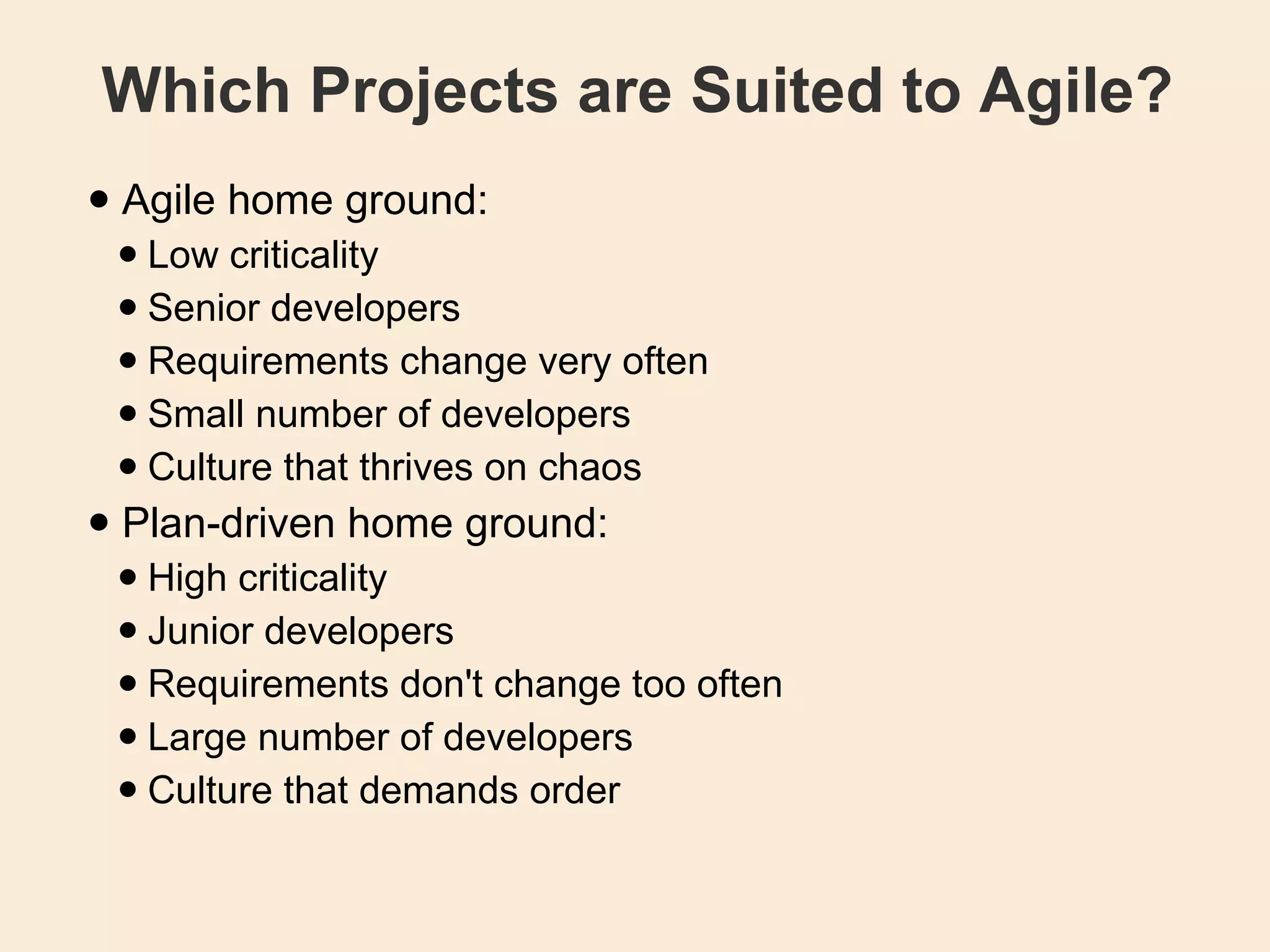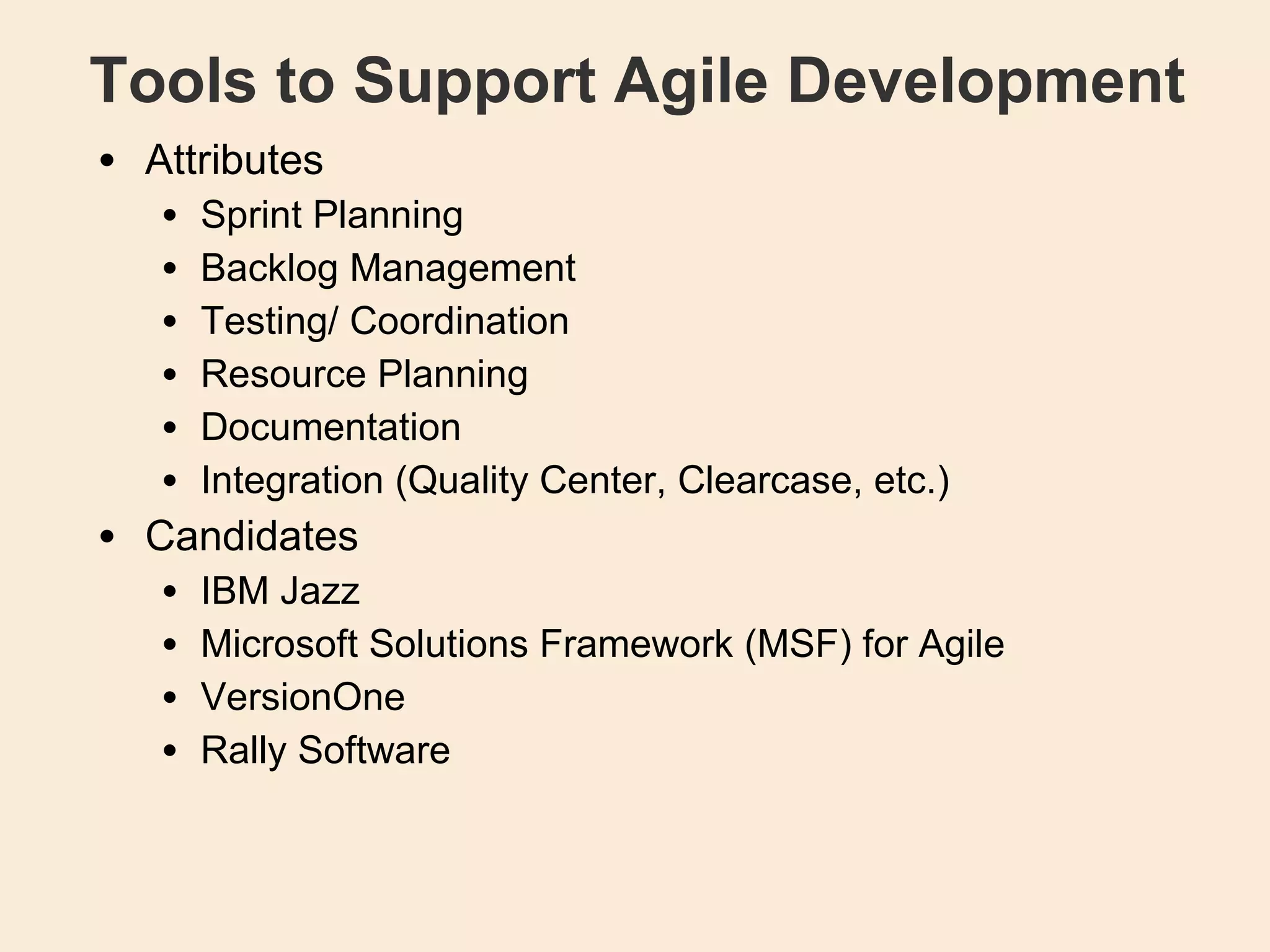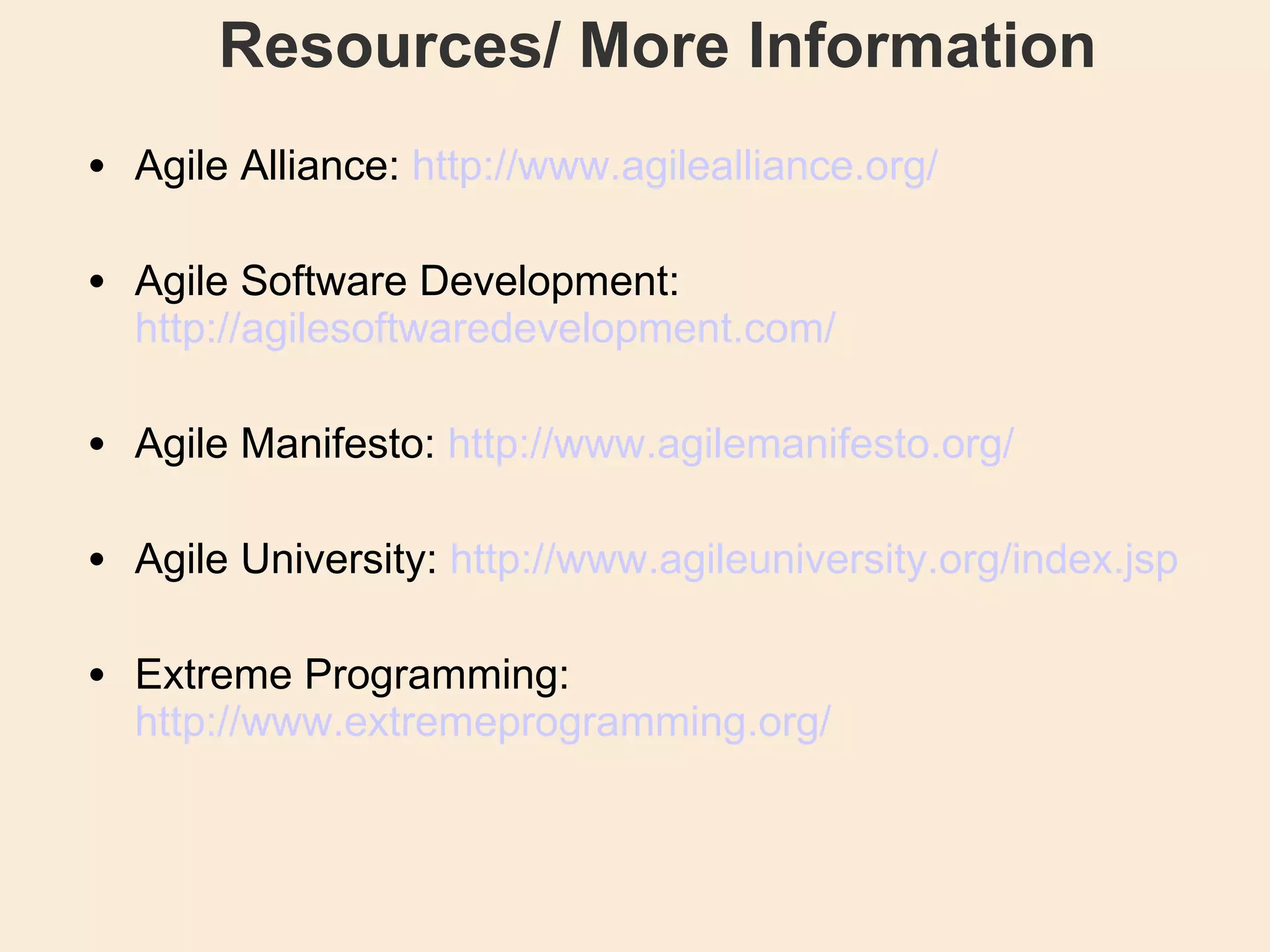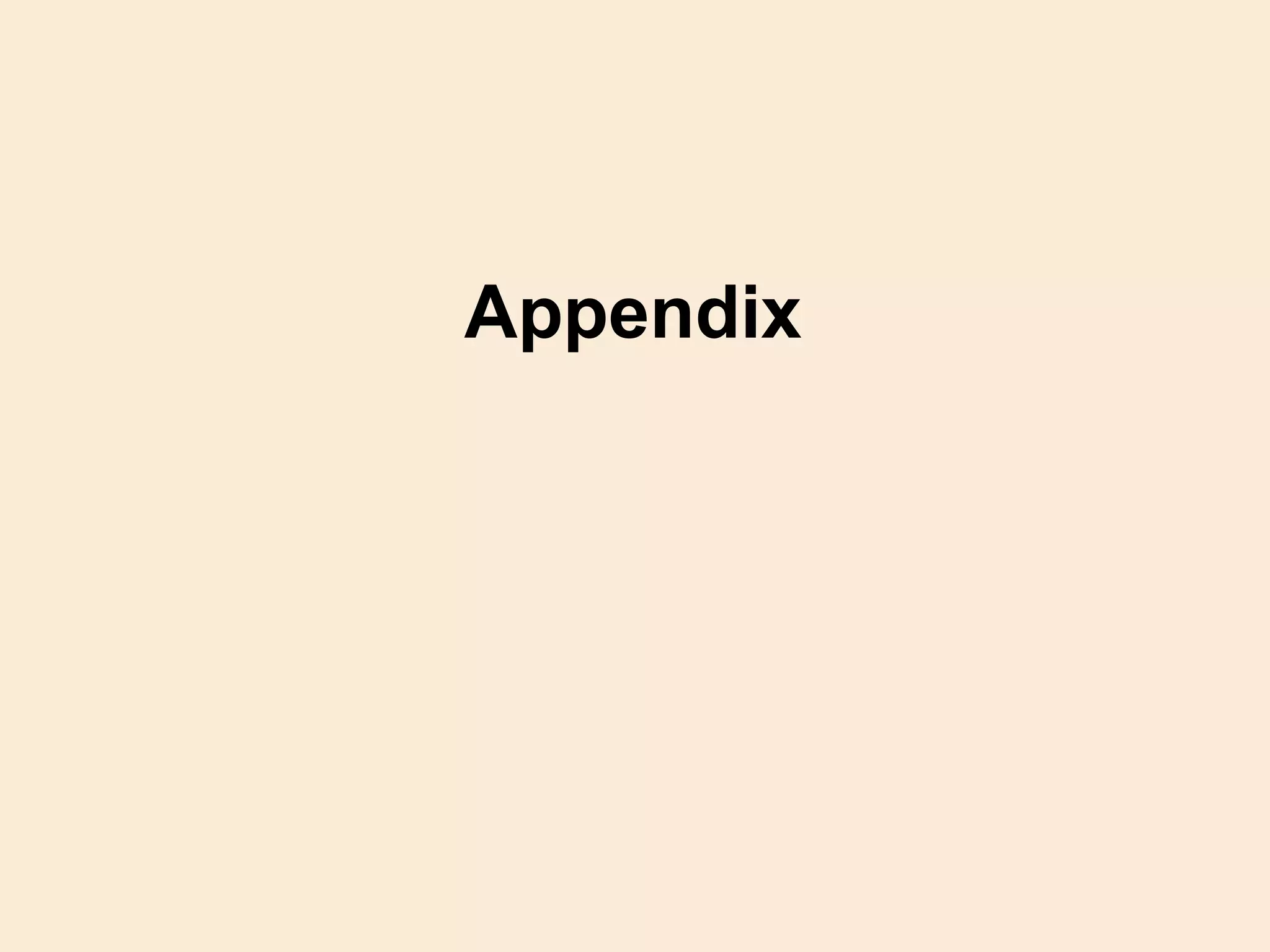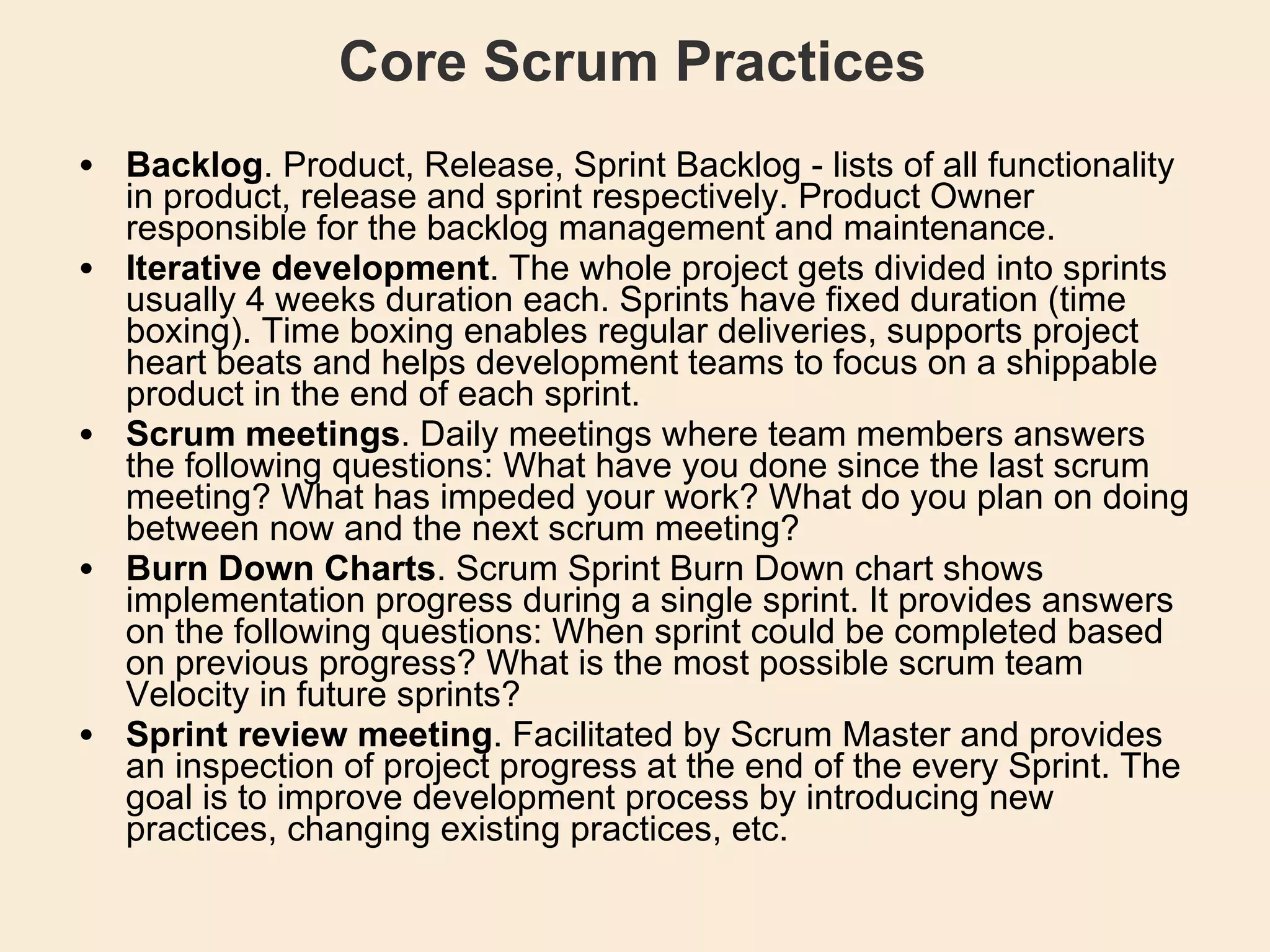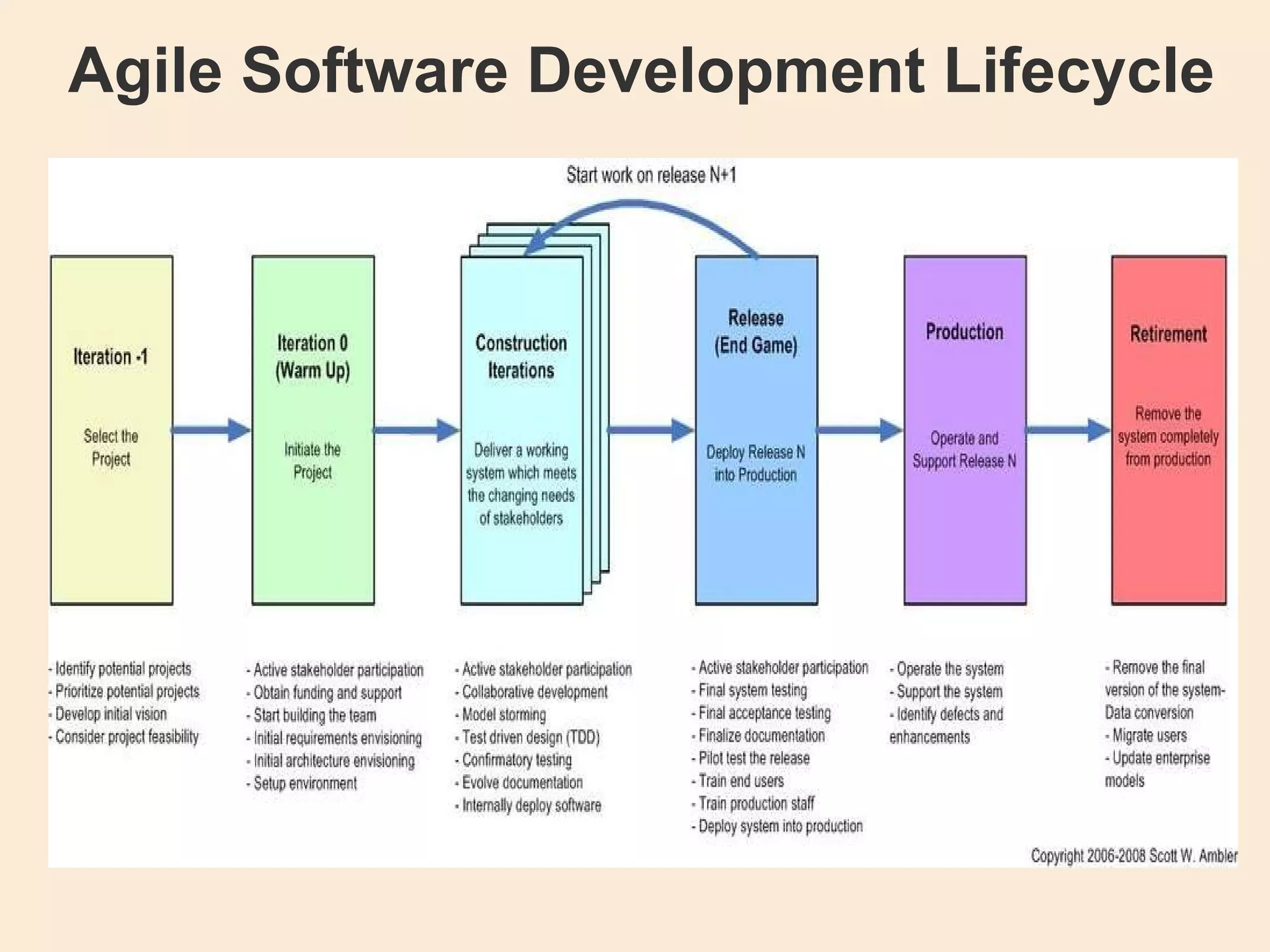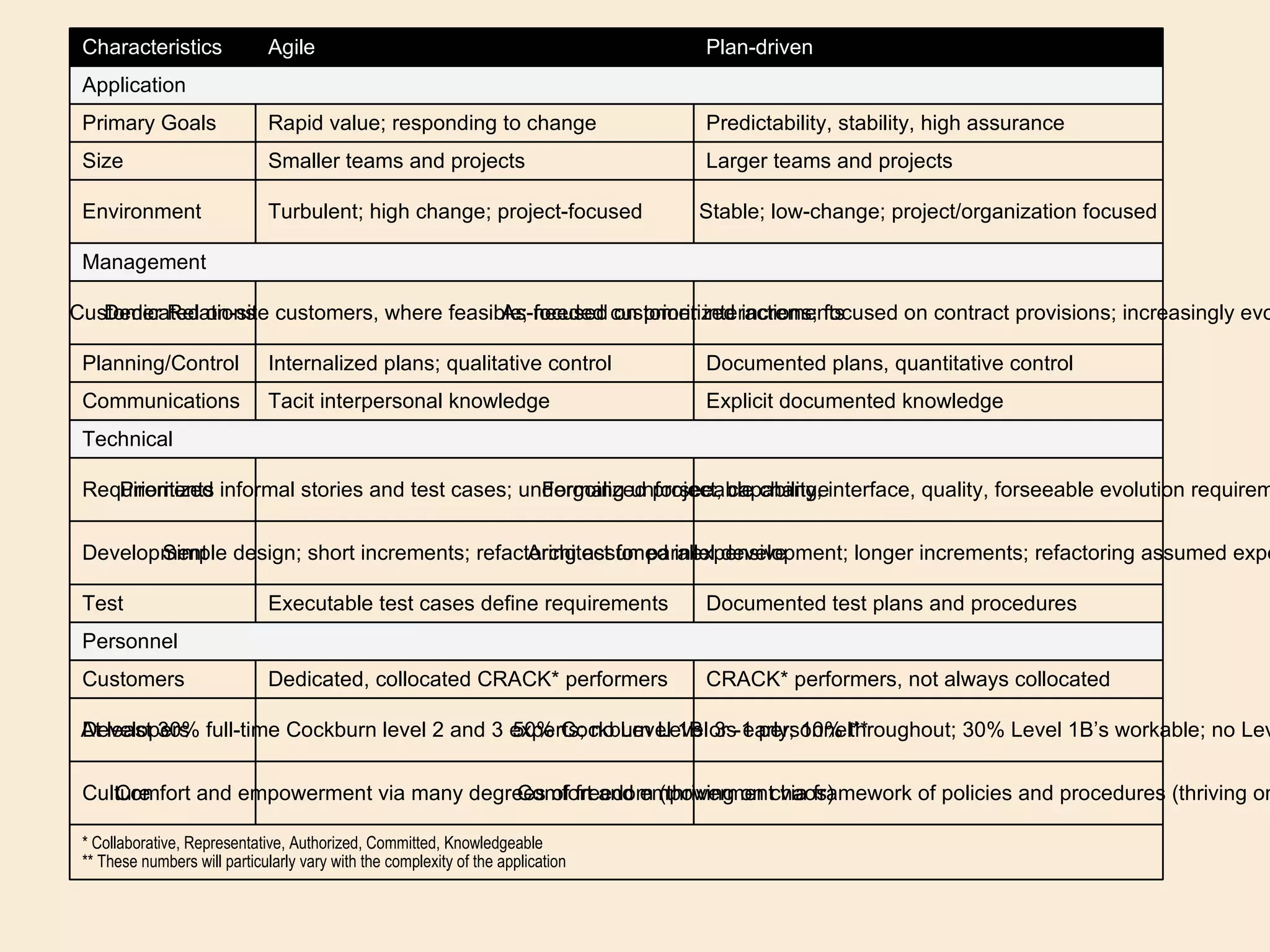The document provides an overview of agile development, including its principles, types of agile methods, tools that support agile development, and when projects are well-suited to agile. It defines agile development as an iterative approach performed by self-organizing teams to produce high-quality software through early delivery and response to changing needs. The principles emphasize things like customer satisfaction, frequent delivery, collaboration, trusting motivated individuals, and responding to change.
![Agile Development Overview Mark Kovacevich [email_address]](https://image.slidesharecdn.com/agiledevelopmentoverviewmkrev1-12557209661874-phpapp03/75/Agile-Development-Overview-1-2048.jpg)
